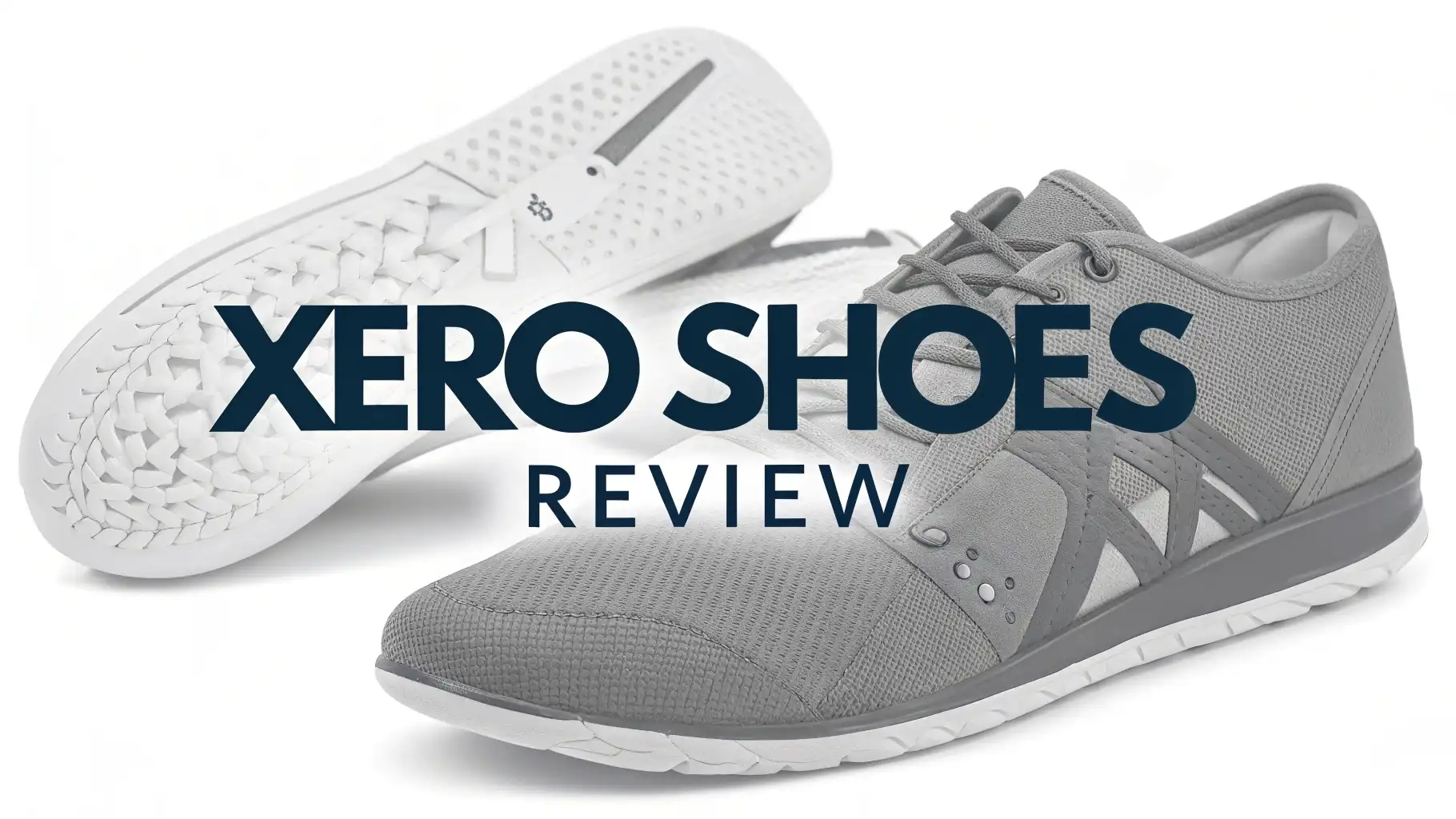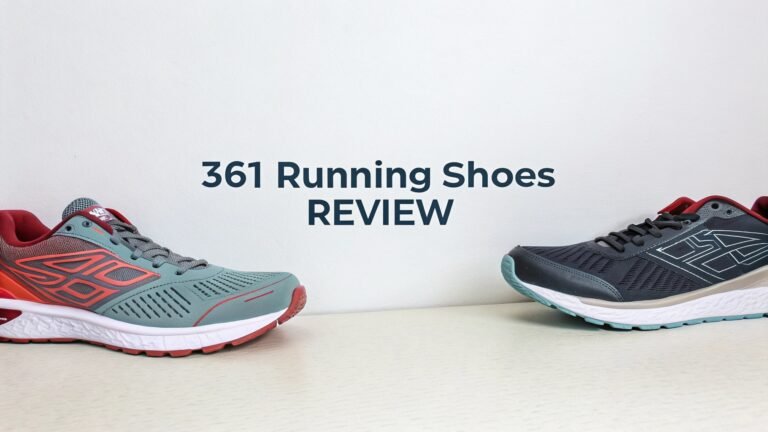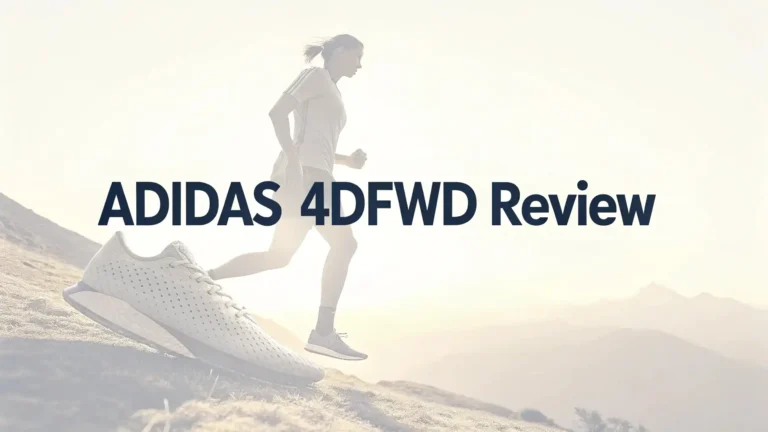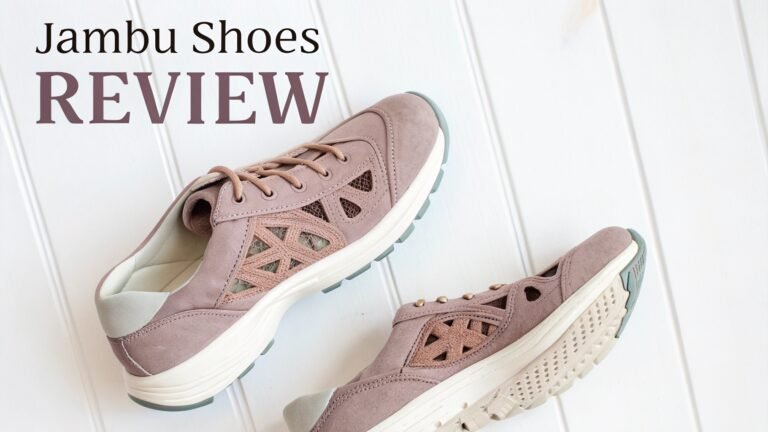Xero Shoes Review: Barefoot Running Meets Modern Comfort
Are you tired of bulky traditional shoes that cramp your feet and mess up your natural walking style? Xero Shoes might just be the game changer you need.
These minimalist barefoot shoes have been making waves in the fitness and outdoor community since their famous Shark Tank appearance. But do they live up to the hype?
This comprehensive review dives deep into everything you need to know about Xero Shoes. We test their most popular models, examine comfort levels, analyze durability, and help you decide if these barefoot shoes deserve a spot in your closet.
Key Takeaways
- Natural Movement: Xero Shoes feature zero drop design and flexible soles that promote natural foot mechanics, reducing strain on joints and improving posture alignment
- Wide Toe Box Benefits: The spacious toe box allows toes to spread naturally, which can help prevent bunions and other foot deformities while improving balance and stability
- Versatile Model Range: From the athletic HFS II to the casual Prio, Xero offers different models for running, hiking, gym workouts, and everyday wear
- Podiatrist Approved: Medical professionals recommend Xero Shoes, particularly the Kelso model, for people dealing with foot problems like bunions and plantar fasciitis
- Durability Concerns: While comfortable and functional, some users report faster wear on the outsole compared to traditional shoes, especially with heavy use on rough surfaces
What Makes Xero Shoes Different From Regular Footwear
Xero Shoes stands apart from traditional footwear through their barefoot philosophy. Regular shoes often feature thick cushioning, heel elevation, and narrow toe boxes that force feet into unnatural positions. Xero takes the opposite approach with their minimalist design.
The zero drop construction means your heel and forefoot sit at the same level. This promotes better posture and reduces stress on your knees, hips, and lower back. Traditional running shoes typically have 8-12mm heel drop, which can alter your natural gait pattern.
Wide toe boxes give your toes room to spread naturally. Most conventional shoes squeeze toes together, leading to problems like bunions, hammertoes, and reduced balance. Xero shoes allow your feet to function as they were designed.
The flexible sole technology lets you feel the ground beneath your feet. This proprioceptive feedback improves balance, strengthens foot muscles, and enhances athletic performance. You maintain ground connection while still getting protection from sharp objects and rough surfaces.
Lightweight construction reduces fatigue during long activities. Some Xero models weigh less than 8 ounces per shoe, compared to 12-16 ounces for typical athletic shoes. This weight reduction becomes noticeable during extended wear periods.
Complete Breakdown of Popular Xero Shoes Models
Xero offers several distinct models, each designed for specific activities and preferences. Understanding the differences helps you choose the right shoe for your needs.
The HFS II serves as their most versatile athletic shoe. It features a tire tread inspired sole pattern that handles both roads and trails effectively. The upper uses breathable mesh materials with synthetic overlays for durability. This model works well for CrossFit, running, hiking, and gym workouts.
Prio shoes target everyday casual wear and light athletic activities. They offer more ground feel than the HFS II due to thinner sole construction. The Prio excels for walking, casual running, and daily wear. It comes in regular and Neo versions, with the Neo providing enhanced ground connection.
The Genesis sandal brings barefoot benefits to warm weather. This packable travel sandal weighs just 6 ounces and packs flat in luggage. The minimalist design provides excellent ground feel while protecting feet from hot pavement and rough surfaces.
Speed Force models cater to serious runners who want maximum ground feel. These shoes feature the thinnest soles in the Xero lineup, making them ideal for experienced barefoot runners who have developed strong foot muscles and proper running form.
HFS II Deep Dive Review: The Jack of All Trades
The HFS II represents Xero’s most popular and versatile model. After extensive testing across different activities, this shoe proves its reputation as a reliable all arounder.
Design and Construction: The HFS II features a 5.5mm FeelTrue sole that balances ground feel with protection. The tire tread pattern provides excellent grip on various surfaces. The upper combines mesh panels for breathability with synthetic overlays for durability in high wear areas.
Comfort and Fit: The shoe runs true to size for most people. The toe box offers generous width, though it feels slightly narrower than the original HFS. The heel cup provides secure fit without being restrictive. Break in period typically lasts 1-2 weeks for people new to minimalist shoes.
Performance Testing: We tested the HFS II across multiple activities. For road running, it handles pavement well but may feel firm for people used to heavily cushioned shoes. Trail performance impresses with good traction on varied terrain. Gym workouts benefit from the stable platform and good ground connection.
Durability Assessment: The outsole shows good wear resistance after 300+ miles of mixed use. However, the tread pattern does wear faster than traditional running shoes. The upper materials hold up well to regular use and washing.
The HFS II costs around $100, positioning it in the mid range for minimalist shoes. This price point offers good value considering the versatile performance and quality construction.
Prio vs Prio Neo: Choosing Your Perfect Daily Driver
The Prio family offers two distinct options for casual and light athletic use. Understanding their differences helps you pick the right version for your lifestyle.
Original Prio Characteristics: The standard Prio features a 6.5mm sole with more structured materials. It provides slightly more protection and durability compared to the Neo version. The upper uses synthetic materials that handle weather and wear better than knit fabrics.
Prio Neo Advantages: The Neo version offers enhanced ground feel through thinner sole construction and softer materials. The knit upper provides superior breathability and comfort for all day wear. This model excels for people who prioritize maximum barefoot sensation.
Activity Suitability: For daily walking and casual activities, both versions work well. The original Prio better handles light trail walking and outdoor activities due to increased durability. The Neo shines for office wear and indoor activities where comfort takes priority.
Sizing Considerations: Both models run true to size, but the Neo feels more forgiving due to stretchier materials. People with wider feet often prefer the Neo for its accommodating fit. The original Prio provides more structured support for activities requiring lateral movement.
Price Comparison: The original Prio typically costs $10-20 less than the Neo version. This price difference reflects the Neo’s premium materials and construction methods. Both offer good value in their respective categories.
The choice between Prio models depends on your priorities. Choose the original for durability and versatility, or the Neo for maximum comfort and ground feel.
Genesis Sandals: Barefoot Freedom for Warm Weather
The Genesis sandal brings Xero’s barefoot philosophy to open toe footwear. This minimalist sandal design offers unique benefits for warm weather activities and travel.
Construction Details: The Genesis features a 6mm FeelTrue sole with moderate grip patterns. The upper uses adjustable straps that distribute pressure evenly across the foot. The packable design collapses flat, making it perfect for travel situations.
Comfort Analysis: The sandal provides excellent ground feel while protecting feet from hot surfaces. The strap system takes some adjustment to find the perfect fit, but once dialed in, it stays secure during activities. Arch support comes from natural foot mechanics rather than artificial structures.
Activity Performance: Beach walking, light hiking, and urban exploration suit the Genesis well. The sandal handles wet conditions better than closed shoes due to quick drying materials. Water activities benefit from the slip resistant sole and secure strap system.
Travel Benefits: The Genesis weighs just 6 ounces and packs completely flat. This makes it ideal for backpacking, vacation travel, and camping where space and weight matter. The durable construction withstands rough handling in luggage.
Sizing and Fit: The Genesis typically requires going up a half size from your normal shoe size. The strap system accommodates various foot shapes, but people with very high arches may find the fit challenging. Break in period usually lasts just a few days.
At $45, the Genesis offers excellent value for a versatile travel sandal. The packable design and barefoot benefits justify the price for active travelers and warm weather enthusiasts.
Comfort and Fit Analysis Across All Models
Sizing consistency varies slightly between Xero models, but most run true to size. The HFS II tends to fit most accurately to stated measurements. Prio models may feel slightly larger, while the Genesis sandal typically requires going up a half size.
Toe box width stands out as a major comfort factor across all Xero shoes. The generous space allows natural toe spread, which improves balance and reduces pressure points. People with bunions or wide feet often find immediate relief compared to traditional shoes.
Break in periods depend on your previous footwear experience. People coming from heavily cushioned shoes need 2-4 weeks to adapt to the minimal design. Those already wearing minimalist shoes can typically transition within days.
Arch support comes from strengthening your natural foot muscles rather than artificial supports. This can initially cause fatigue in people with weak foot muscles. Gradual transition prevents overuse injuries and allows proper adaptation.
Heel fit varies by model but generally provides secure retention without pressure points. The HFS II offers the most structured heel cup, while the Prio models feel more relaxed. All models avoid the heel slippage common in oversized shoes.
Temperature regulation performs well across the lineup due to breathable materials and minimal bulk. Summer use stays comfortable even during extended activities. Winter use may require appropriate socks for warmth in cold conditions.
Durability Testing: How Long Do Xero Shoes Last
Outsole longevity presents the biggest durability concern with Xero shoes. The thin, flexible soles wear faster than traditional thick rubber outsoles. Heavy users report 400-600 miles of use before replacement becomes necessary.
Upper material durability varies by model and use patterns. The HFS II synthetic materials handle rough use well and maintain structure over time. Prio Neo knit uppers show wear faster but remain functional. Proper care extends upper life significantly.
Stress point analysis reveals vulnerable areas across models. The toe area sees the most wear due to toe off during walking and running. Side panels on the HFS II handle lateral stress well during gym activities. Heel areas generally maintain integrity throughout the shoe’s life.
Care and maintenance impact durability substantially. Hand washing with mild soap preserves materials better than machine washing. Air drying prevents heat damage that can compromise sole bonding. Regular cleaning removes debris that can cause premature wear.
Replacement timeline depends heavily on usage patterns. Casual daily wear typically provides 8-12 months of use. Regular running may require replacement every 4-6 months. Mixed use patterns generally fall somewhere in between these ranges.
Value consideration factors in the multiple benefits beyond just longevity. The foot health improvements, comfort gains, and performance benefits may justify more frequent replacement for many users.
Performance Testing: Running, Walking, and Cross Training
Running performance varies significantly based on your running style and experience with minimalist shoes. The HFS II handles road running well for forefoot and midfoot strikers. Heel strikers may experience discomfort initially and need longer adaptation periods.
Trail running capabilities impress across suitable Xero models. The HFS II provides adequate traction on moderate trails while maintaining ground feel. Rocky technical terrain requires careful foot placement due to limited sole thickness. Root and rock protection comes from awareness rather than padding.
Walking efficiency improves noticeably for most users after adaptation. The natural foot position and flexible sole promote proper gait mechanics. Daily step counts often increase due to reduced foot fatigue. Urban walking becomes more engaging with enhanced ground connection.
Cross training versatility makes Xero shoes popular in gym environments. Weightlifting benefits from the stable platform and ground connection. HIIT workouts work well due to the flexible sole and secure fit. Yoga and Pilates feel more natural compared to thick soled athletic shoes.
Sports specific performance varies by activity demands. Tennis and basketball may require more lateral support than Xero shoes provide. Cycling works well due to efficient power transfer. Hiking depends on terrain difficulty and personal preference for ground feel versus protection.
Recovery benefits often surprise new users. Many report reduced joint pain and improved posture after switching to Xero shoes. The natural foot mechanics promote better alignment throughout the kinetic chain.
Sizing Guide and Fit Recommendations
Measuring your feet properly ensures the best fit across Xero models. Measure both feet at the end of the day when they are naturally swollen. Use the longer foot measurement for sizing decisions. Trace your foot on paper for the most accurate assessment.
Model specific sizing requires attention to individual characteristics. The HFS II runs true to size for most people but may feel narrow for very wide feet. Prio models typically accommodate wider feet better due to stretchier materials. Genesis sandals usually require a half size larger than your normal shoe size.
Width considerations matter significantly for comfort and performance. Xero shoes generally offer more width than traditional shoes, but individual models vary. People with narrow feet may find some models too wide, while wide footed individuals usually appreciate the extra room.
Length assessment should account for toe movement during activities. Leave thumb width space between your longest toe and the shoe front. This prevents jamming during downhill activities and allows for natural foot expansion during use.
Professional fitting at specialty running stores can provide valuable insights. Many stores carry Xero shoes and have staff experienced with minimalist footwear fitting. Online sizing tools on Xero’s website offer additional guidance for remote purchases.
Return policies provide safety nets for sizing mistakes. Most retailers offer 30 day return windows for unworn shoes. Some specialty stores extend this period for minimalist shoe newcomers who need more adaptation time.
Price Comparison and Value Assessment
Current pricing positions Xero shoes in the premium minimalist category. The HFS II retails for around $100, while Prio models range from $80-100. Genesis sandals cost approximately $45, representing good value in the minimalist sandal market.
Competitive analysis shows Xero pricing competitively against similar brands. Vivobarefoot shoes often cost $120-150, making Xero a more affordable option. Merrell minimalist models price similarly but offer different design philosophies. Budget minimalist brands like Whitin cost $30-50 but may lack durability.
Cost per wear calculations favor quality minimalist shoes for regular users. A $100 Xero shoe lasting 8 months with daily use costs about $0.40 per day. Traditional athletic shoes lasting 12 months at $80 cost approximately $0.22 per day, but this ignores the health and comfort benefits.
Sales and discounts appear regularly on Xero’s website and retailer sites. End of season clearances can offer 20-30% savings on previous year models. Bundle deals sometimes include multiple pairs at reduced per shoe pricing.
Long term value extends beyond initial purchase price. Many users report reduced foot pain, improved posture, and enhanced athletic performance after switching to Xero shoes. These benefits may offset higher initial costs and more frequent replacement needs.
Warranty coverage protects against manufacturing defects but not normal wear. Xero offers standard warranty terms comparable to other athletic shoe brands. Customer service generally receives positive reviews for handling warranty claims and sizing issues.
Pros and Cons: The Complete Truth About Xero Shoes
Major Advantages make Xero shoes compelling for many users. The natural foot positioning promotes better overall body alignment and can reduce joint pain. Improved ground feel enhances athletic performance and daily activity enjoyment. Versatile designs work across multiple activities, reducing the need for specialized shoes.
Comfort benefits often surprise newcomers to minimalist footwear. Reduced foot fatigue during long activities stems from allowing natural foot mechanics. Better balance develops as proprioceptive feedback improves. Toe freedom eliminates cramping and pressure points common in traditional shoes.
Significant drawbacks require honest consideration before purchase. Limited cushioning can feel uncomfortable on hard surfaces, especially during the adaptation period. Faster wear rates mean more frequent replacement compared to traditional shoes. Weather protection remains minimal in cold or wet conditions.
Adaptation challenges present the biggest hurdle for new users. Foot muscle weakness in people used to supportive shoes can cause initial discomfort. Gait changes may feel awkward until proper mechanics develop. Social acceptance varies, as some formal situations may not suit minimalist shoe aesthetics.
Activity limitations affect certain sports and situations. High impact activities on hard surfaces may cause more stress on feet and joints initially. Cold weather use requires additional insulation through socks or other methods. Professional environments may not accommodate the casual appearance of most Xero models.
Individual suitability varies based on foot type and personal preferences. People with severe foot problems should consult podiatrists before switching to minimalist shoes. Personal comfort priorities determine whether the benefits outweigh the adaptation challenges.
Best Alternatives and How Xero Compares
Vivobarefoot represents the primary premium competitor to Xero shoes. Vivobarefoot typically offers more formal styling options and uses different sole materials. Their shoes generally cost $20-50 more than comparable Xero models but may provide different comfort characteristics.
Merrell minimalist line includes models like the Trail Glove and Vapor Glove. These shoes often bridge the gap between traditional and minimalist design more gradually. Sizing tends to run smaller than Xero, and durability varies by specific model.
Altra running shoes provide zero drop design with more cushioning than Xero. This makes them appealing for people who want some minimalist benefits without full barefoot feel. FootShape toe boxes compete directly with Xero’s wide toe box philosophy.
Budget alternatives like Whitin and Tesla shoes offer similar basic features at lower prices. These brands typically sacrifice some build quality and durability but provide affordable entry points into minimalist footwear. Comfort and longevity generally favor Xero shoes.
Traditional minimalist brands like Vibram FiveFingers take toe separation to the extreme. These shoes provide maximum ground feel but come with significant social acceptability challenges. Performance varies based on individual toe dexterity and adaptation ability.
Specialty running brands like Newton and Skora focus specifically on running performance. These shoes often cost more than Xero while providing more specialized features for serious runners. Versatility across multiple activities favors Xero’s approach.
Customer Reviews and Real World Feedback
Positive user experiences dominate customer feedback across review platforms. Many users report immediate comfort improvements and reduced foot pain after switching to Xero shoes. Athletic performance gains appear frequently in reviews from runners and gym enthusiasts.
Adaptation success stories encourage newcomers to minimalist footwear. Users often describe gradual improvement in foot strength and overall comfort over 4-8 weeks. Long term satisfaction rates appear high among people who successfully transition to regular Xero use.
Critical feedback centers around predictable issues with minimalist footwear. Durability concerns appear in roughly 20% of reviews, particularly from heavy users. Initial discomfort during adaptation gets mentioned frequently but usually resolves with time and proper transition protocols.
Sizing complaints occur most often with online purchases where trying on shoes first isn’t possible. Width issues affect some users, particularly those with very narrow or very wide feet. Model specific problems vary, with the HFS II receiving more durability criticism than other models.
Professional athlete endorsements provide credibility but may not reflect average user experiences. Several ultramarathon runners and CrossFit athletes publicly support Xero shoes. These endorsements highlight performance potential but may not guarantee similar results for recreational users.
Medical professional feedback offers valuable perspective on foot health impacts. Podiatrists generally support the zero drop and wide toe box design principles. However, they also recommend gradual transition and individual assessment for people with existing foot problems.
What is the zero drop design in Xero shoes?
Zero drop means the heel and forefoot sit at the same height level. This promotes natural posture and reduces stress on joints compared to elevated heel shoes.
How long does it take to adapt to Xero shoes?
Most people need 2-4 weeks for full adaptation. Start with short wearing periods and gradually increase time to avoid overuse injuries.
Are Xero shoes good for people with flat feet?
People with flat feet can wear Xero shoes but should transition gradually. The lack of arch support requires foot muscles to strengthen naturally.
Can I use Xero shoes for marathon running?
Yes, but proper adaptation is essential. Many marathoners successfully use Xero shoes after building up foot strength and adjusting running form.
How do I clean my Xero shoes?
Hand wash with mild soap and air dry. Avoid machine washing and heat drying which can damage the sole bonding and materials.
Do Xero shoes run true to size?
Most models run true to size, but the Genesis sandal typically requires a half size larger. Check specific model sizing guides before ordering.
Are Xero shoes suitable for winter weather?
Xero shoes work in winter with appropriate socks for warmth. The minimal design provides less insulation than traditional winter footwear.
What is the warranty on Xero shoes?
Xero offers standard warranty coverage against manufacturing defects. Normal wear and tear is not covered under warranty terms.
Can children wear Xero shoes?
Yes, Xero makes kids sizes. The natural foot development benefits may be particularly valuable for growing feet and developing gait patterns.
How often should I replace my Xero shoes?
Replacement timing depends on usage but typically ranges from 4-12 months. Heavy users may need replacement every 400-600 miles of use.

Mia Smith is the founder of Shoe Storyteller, a blog that celebrates the art and stories behind shoes. With a passion for fashion and a flair for storytelling, Mia brings a unique perspective to the world of footwear.







